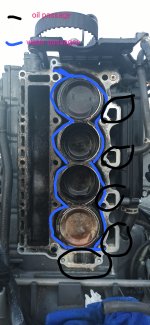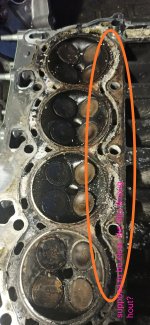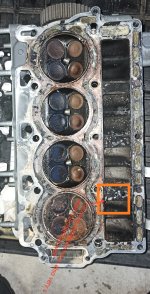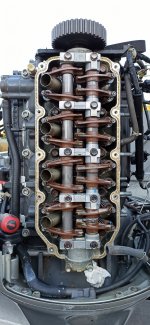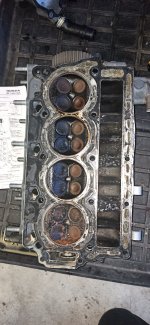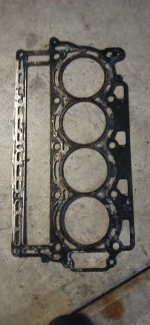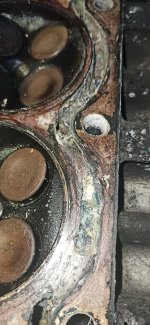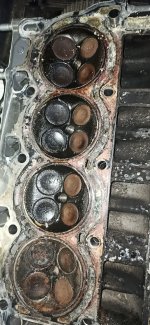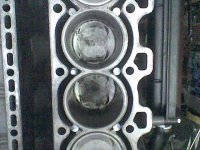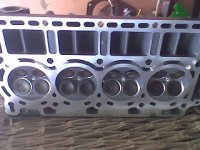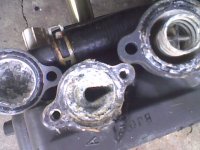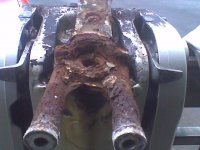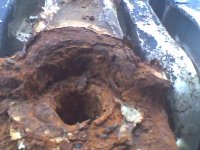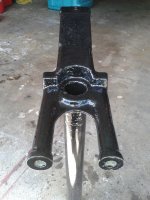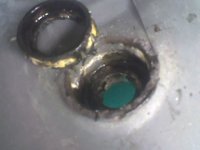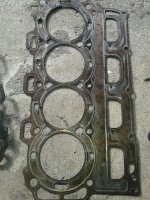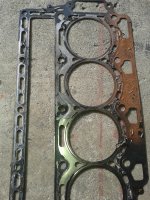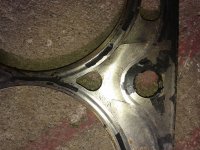No need to remove the pulley I don't think. I usually remove the idler pulley and just slide the belt up and off the cam pulley. Pretty easy. Tie the belt so its forward, out of your way while you're at it....
Timing marks won't be needed until you are reassembling.
Thank you. I was able to remove the cylinder head without removing the pulley. The manual instructed to remove several other parts too and they didn't need to be removed.
Well, I don't think the cylinder head looks good.
- Near cylinder 4, on the exhaust side, I see a pinhole and missing aluminum. Maybe I can clean out the oil and exhaust and weld it up. it's really small. no cracks.
- No cracks on the cylinder block I think. I don't see much obstruction on the block side of the engine.
- Head cylinder, lots of salt build-up. Very very packed. I'm looking at pictures of what the head suppose to look like and those water passages are suppose to be cleared/have grooves and channels for water flow? It's pretty gunk up around cylinder 1, between 2 and 3 and 3. All on exhaust side.
Can you guys take a look at the pictures and provide me with some insight?
This is an old engine, per engine frame, it's a 2003. So 18 years, and probably spent a lot of time in salt water in Bay Area. When I bought the motor, the guy showed me maintenance invoices and what not, i can't remember when the motor was last run by them. But I bought it and used it probably 20-30 times. Again I always had issue with telltale constriction, but it always started up and run, and compression isn't that bad.
My thoughts on this engine right now is that if I can just clean up the salt build up/gunk, patch the exhaust pinhole and then sand the head flat. Then reinstall with a new head gasket. At least then the water passages are cleared, maybe I can get couple years on this motor?
The other option would be to get a new cylinder head, which is more than $600 itself, then add in the cost of all the other parts, might be in the thousands. hmmm decisions.






















